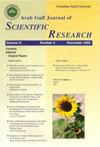合成蛋壳羟基磷灰石的骨诱导特性:大鼠实验研究
Q4 Business, Management and Accounting
引用次数: 0
摘要
目的 本研究探讨了在大鼠中切牙窝局部植入蛋壳提取的合成羟基磷灰石(sHAp)的骨诱导和愈合能力。大约 24 只成熟的雄性 Sprague-Dawley (SD) 大鼠被拔掉了上中切牙。大鼠被分为三组,每组八只:第 1 组:拔出的中切牙的牙槽未填充(对照组);第 2 组:填充市售羟基磷灰石(HAp);第 3 组:植入从蛋壳中提取的 sHAp。拔牙后,在第 2 周和第 4 周,每组各处死 4 只大鼠。获取上颌骨组织切片,并用苏木精和伊红(H&E)以及马森氏毛状体(MT)染色。结果表明,局部植入的 sHAp 对细胞系(人成骨细胞和成纤维细胞)和动物无毒且安全。H&E、MT 和 IHC 组织学分析表明,使用局部植入的蛋壳 sHAp 治疗的牙槽窝内填充了新的骨组织,其厚度与其他组相当。在体内模型中,sHAps 增加了 OCN 和 PCNA 的表达,从而改善了骨修复。本文章由计算机程序翻译,如有差异,请以英文原文为准。
Osteoconductive properties of synthetic eggshell hydroxyapatite: an experimental study in rats
PurposeThis study examines the osteoconductive and healing capabilities of locally implanted synthetic hydroxyapatite (sHAp) derived from eggshells in the central incisor sockets of rats.Design/methodology/approachToxicity experiments were conducted in vitro and in vivo, to testify the safety dosage of sHAp. Around 24 mature male Sprague–Dawley (SD) rats had their upper central incisors extracted. The rats were placed into three groups of eight rats each: Group 1: the sockets of extracted central incisors were left unfilled (control), Group 2: filled up with commercially available hydroxyapatite (HAp) and Group 3: implanted with sHAp locally retrieved from eggshells. After extraction, four rats from each group were sacrificed at 2nd and 4th weeks. Maxillary tissue sections were obtained and stained with hematoxylin and eosin (H&E) and Masson’s trichome (MT) staining. Anti-osteocalcin (OCN) and proliferating cell nuclear antigen (PCNA) were used primary antibodies for immunohistochemistry (IHC) special labeling.FindingsThe results showed that the locally implanted sHAp was non-toxic and safe in cell lines (human osteoblast and fibroblast) and animals. Histological analysis of H&E, MT and IHC showed that the sockets treated with locally implanted sHAp from eggshells were filled with new bone tissue of comparable thickness to other groups.Originality/valueThis unique technique uses locally implanted eggshell-derived sHAp with osteoconductive characteristics. In an in vivo model, sHAps increased OCN and PCNA expression to improve bone repair.
求助全文
通过发布文献求助,成功后即可免费获取论文全文。
去求助
来源期刊

Arab Gulf Journal of Scientific Research
综合性期刊-综合性期刊
CiteScore
1.00
自引率
0.00%
发文量
0
审稿时长
>12 weeks
期刊介绍:
Information not localized
 求助内容:
求助内容: 应助结果提醒方式:
应助结果提醒方式:


